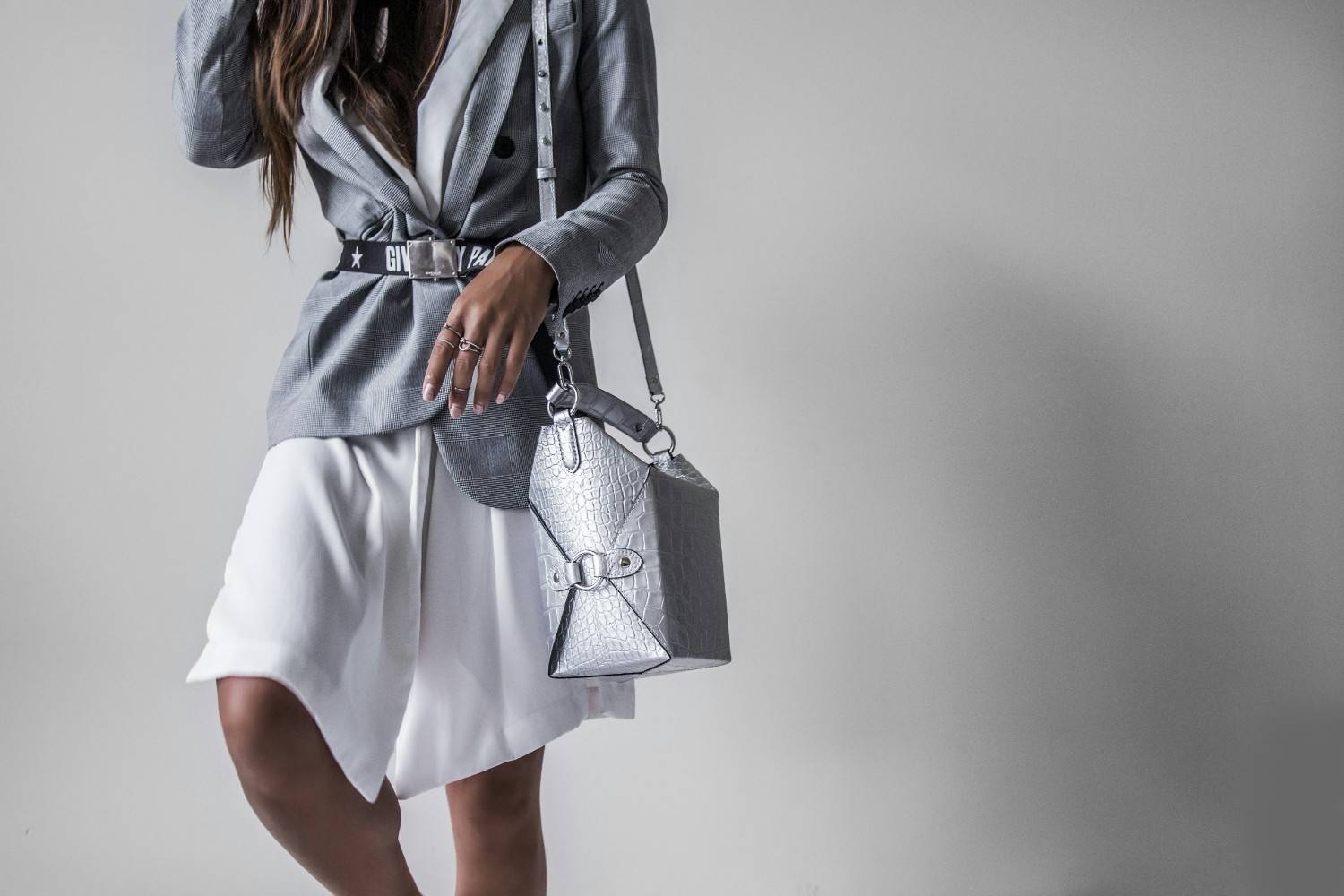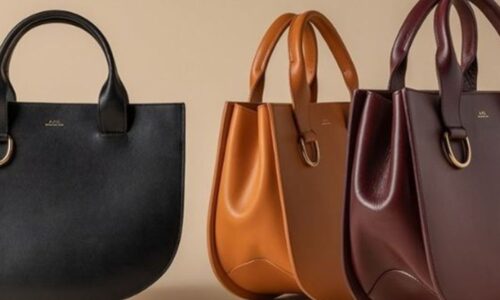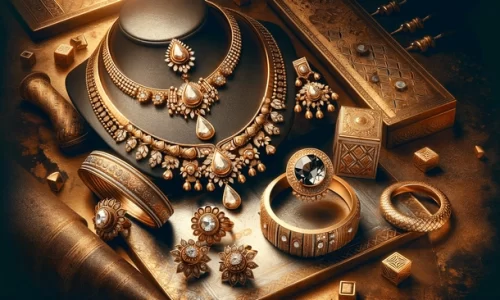
Image source: unsplash.com
Embarking on the journey through the world of luxury fashion is akin to exploring a rich tapestry woven from threads of artistry, heritage, and innovation. At its core, this odyssey begins in the skilled hands of artisans, whose dedication to craftsmanship breathes life into the visions of designers. These creations, as they make their way to the wardrobes of discerning consumers around the globe, carry with them stories of tradition, the allure of brand heritage, and the adaptability of the retail landscape to the digital age. This narrative not only celebrates the tangible beauty of luxury items but also delves into the intricate processes that ensure their exclusivity and desirability.
The Heart of Luxury Artisans and Craftsmanship
At the heart of every luxury fashion item lies the unparalleled skill of artisans, whose meticulous attention to detail and dedication to quality set the foundation for the industry’s reverence. Consider the creation of a Louis Vuitton handbag, which is not merely an act of assembly but a testament to the marriage of tradition and innovation. These artisans, often working in ateliers that have honed their craft over generations, imbue each piece with a sense of history and uniqueness, making luxury items not just products, but pieces of art
The value of luxury fashion items extends beyond their aesthetic appeal, rooted deeply in the craftsmanship that brings them to life. This craftsmanship is a dialogue between the past and the present, where age-old techniques meet modern innovations to create items that are both timeless and contemporary. It’s this blend that ensures the enduring appeal of luxury goods, making them coveted items that transcend seasonal trends.
Brand Stories Chanel’s Global Distribution Mastery
Chanel stands as a beacon of luxury fashion, not only for its iconic designs but also for its masterful approach to global distribution. The brand’s strategic placement of boutiques and its intricate distribution networks serve as a blueprint for how luxury brands can maintain exclusivity while reaching a global audience. Chanel’s boutiques, located in some of the world’s most prestigious shopping districts, are more than just retail spaces; they are immersive experiences that reflect the brand’s heritage and craftsmanship.
A Chanel representative once noted, “Our desire is generally to invest with partners that we know, with whom we already work and whose skills and know-how we wish to preserve. Their activities are complementary and allow us to strengthen the sectors of excellence, such as the knitwear sector, which are essential to the activity and creation of our collections.” This insight underscores Chanel’s dedication to nurturing the craftsmanship and exclusivity that define its brand.
Navigating the Luxury Fashion Supply Chain
The journey of a luxury item from conception to consumer is a complex web, involving numerous stages from sourcing materials to the final product gracing retail shelves. This supply chain is fraught with challenges, as brands strive to maintain the highest standards of quality, authenticity, and ethical practices. The luxury fashion industry, with its emphasis on exclusivity and craftsmanship, demands a level of precision and care at every step of this process.
Maintaining this standard requires a deep understanding of the supply chain and a commitment to transparency and sustainability. As consumers become more conscious of the ethical implications of their purchases, luxury brands are under increasing pressure to demonstrate their commitment to responsible practices. This shift is reshaping the luxury fashion supply chain, pushing brands to find innovative solutions that align with their heritage and values.

Adapting to the Digital Age
The digital age has ushered in a transformation of luxury retail, challenging brands to adapt to the changing landscape of consumer behaviour. The rise of online platforms has expanded the reach of luxury fashion, making it more accessible to a global audience. However, this shift has not diminished the role of physical stores, which continue to offer unique experiences that cannot be replicated online. These spaces serve as a tangible connection to the brand, offering consumers a chance to immerse themselves in the world of luxury fashion.
The blending of digital and physical realms is a testament to the industry’s adaptability, as retailers strive to meet the evolving needs of the modern consumer. This hybrid approach allows brands to offer a seamless shopping experience, combining the convenience of online shopping with the allure of in-store experiences. As the retail landscape continues to evolve, luxury fashion brands are at the forefront of innovation, redefining what it means to shop for luxury items in the digital age.
Spotlight on Cosette
In the realm of luxury fashion, Cosette stands out for its mission to make luxury more affordable and accessible. Based in Sydney, Australia, Cosette offers a unique opportunity for consumers to acquire luxury handbags, including sought-after designer handbags from leading brands at discounted prices. By efficiently utilising overstock from European retailers, Cosette provides unparalleled value without compromising the prestige of luxury brands. This approach not only democratises access to luxury fashion but also aligns with the growing consumer demand for sustainable practices by reducing the environmental impact associated with overproduction.
Cosette’s supply chain provenance ensures the authenticity and quality of its offerings, with products sourced directly from Europe, mainly Italy. This relationship with trusted suppliers allows Cosette to offer competitive retail prices on designer tote bags and crossbody designer bags, catering to a diverse clientele. Whether shopping online or in-store, customers enjoy a premium buying experience, underscored by a commitment to sustainability and mindful consumption.
E-commerce’s Role in Luxury Accessibility
E-commerce has revolutionised the way luxury fashion is accessed, breaking down geographical barriers and making high-end fashion more available to a global audience. Online shopping platforms have become vital touchpoints, connecting consumers with luxury brands and retailers like Cosette. This digital expansion has not only broadened the reach of luxury fashion but also introduced a new level of convenience, allowing consumers to explore and purchase luxury items from the comfort of their own homes.
The impact of e-commerce on luxury accessibility is profound, offering consumers a gateway to a world that was once exclusive to a select few. This shift towards online shopping has prompted luxury brands to enhance their digital presence, ensuring that the online experience reflects the brand’s heritage and values. As e-commerce continues to grow, it remains a crucial component of the luxury fashion ecosystem, bridging the gap between craft and consumer.
The Sustainability Movement
The luxury fashion industry is at a crossroads, facing the dual challenge of maintaining its exclusivity while addressing the growing demand for sustainable practices. Brands like Chanel and retailers like Cosette are leading the way, implementing initiatives to reduce overproduction and promote conscious consumption. These efforts are not just about meeting consumer expectations but also about preserving the craftsmanship and heritage that define luxury fashion.
Sustainability in luxury fashion goes beyond environmental considerations, encompassing ethical sourcing, production, and distribution practices. By adopting a more sustainable approach, luxury brands can ensure that their legacy endures, contributing to a more responsible and mindful fashion industry. As consumers become more aware of the impact of their purchases, the movement towards green luxury is gaining momentum, reshaping the industry’s future.
Future Trends in Technology and Consumer Shifts
The luxury fashion industry is on the brink of a transformation, driven by technological innovations and shifts in consumer behaviour. Blockchain technology is emerging as a tool for ensuring authenticity, while artificial intelligence is revolutionising personalisation, offering consumers a tailored shopping experience. These technological advancements, coupled with a growing emphasis on ethical and sustainable choices, are setting the stage for the future of luxury fashion.
As consumers increasingly prioritise sustainability and authenticity, luxury brands are adapting, integrating these values into their business models. This shift is not just about meeting consumer demands but also about leading the industry towards a more responsible and transparent future. The luxury fashion industry is evolving, embracing technology and sustainability as key components of its journey from craft to consumer.
The Ever-Evolving Tapestry of Luxury Fashion
The global odyssey of luxury fashion is a testament to the industry’s dynamic nature, characterised by a constant interplay between tradition and innovation. From the skilled hands of artisans to the digital platforms that bring luxury fashion to a global audience, the journey of luxury items is marked by a commitment to craftsmanship, exclusivity, and sustainability. As we reflect on this journey, it’s clear that the roles of artisans, brands, and retailers are intricately connected, each contributing to the rich tapestry of luxury fashion.
This odyssey is not just about the creation and consumption of luxury items but also about the values and stories that they embody. As the luxury fashion industry continues to navigate the challenges and opportunities of the digital age, its ability to adapt and evolve ensures that the journey from craft to consumer remains as compelling as ever. In this ever-changing landscape, the essence of luxury fashion—its dedication to quality, heritage, and innovation—remains a constant, guiding the industry towards a future that honours its past while embracing the possibilities of the present.
Post You May Also Like



